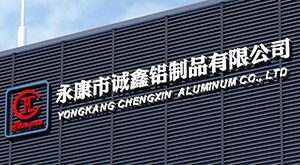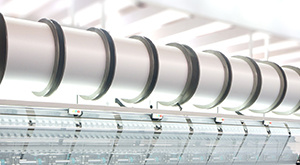23
2024
-
08
Exploring the Advancements and Applications of Ribbon Weaving Machines in Textile Manufacturing
Author:
In the realm of textile manufacturing, ribbon weaving machines are essential for producing a wide array of decorative and functional ribbons used in various applications, from fashion accessories to packaging materials. These machines have undergone significant technological advancements, enhancing their efficiency, versatility, and quality of output.
One of the key developments in ribbon weaving technology is the integration of computer numerical control (CNC). CNC ribbon weaving machines allow for precision in design and production, enabling manufacturers to create intricate patterns and customized ribbons at a much faster pace than traditional methods. This increased precision reduces material waste and enhances overall production efficiency, which is crucial in a competitive market where margins can be tight.
Another significant advancement is the use of advanced weaving techniques such as Jacquard weaving, which allows for the creation of complex multi-colored patterns. This technology enables manufacturers to produce high-quality decorative ribbons that can be tailored to specific customer needs. As consumer preferences shift towards personalized and unique products, the ability to swiftly adapt designs is a powerful asset for businesses in the textile industry.
The materials used in ribbon weaving machines have also evolved, with many manufacturers now using high-performance yarns that promote durability and colorfastness. These materials not only improve the longevity of the ribbons produced but also expand their application across various sectors, including fashion, home décor, and even industrial uses. Additionally, the ability to weave with eco-friendly materials is becoming increasingly important, as sustainability is a growing concern among consumers and manufacturers alike.
Moreover, ribbon weaving machines can be equipped with various features such as automatic tension control and real-time monitoring systems. These features ensure consistent production quality and reduce the need for manual intervention, minimizing labor costs and operational errors. For manufacturers looking to optimize their processes, investing in such technologies can provide a significant competitive edge.
Finally, the global market for ribbon weaving machines is expected to grow as demand for specialized textiles rises. Emerging markets in Asia and Latin America are particularly promising, driven by increased consumer spending and a growing appetite for diverse textile products.
In conclusion, ribbon weaving machines are a critical component of modern textile manufacturing, offering enhanced efficiency, versatility, and design capabilities. By embracing the latest technological advancements, manufacturers can better meet the evolving needs of the market and position themselves for future success in an increasingly competitive landscape. As the industry continues to innovate, those who remain informed about these developments will be well-equipped to leverage the full potential of ribbon weaving technology.
One of the key developments in ribbon weaving technology is the integration of computer numerical control (CNC). CNC ribbon weaving machines allow for precision in design and production, enabling manufacturers to create intricate patterns and customized ribbons at a much faster pace than traditional methods. This increased precision reduces material waste and enhances overall production efficiency, which is crucial in a competitive market where margins can be tight.
Another significant advancement is the use of advanced weaving techniques such as Jacquard weaving, which allows for the creation of complex multi-colored patterns. This technology enables manufacturers to produce high-quality decorative ribbons that can be tailored to specific customer needs. As consumer preferences shift towards personalized and unique products, the ability to swiftly adapt designs is a powerful asset for businesses in the textile industry.
The materials used in ribbon weaving machines have also evolved, with many manufacturers now using high-performance yarns that promote durability and colorfastness. These materials not only improve the longevity of the ribbons produced but also expand their application across various sectors, including fashion, home décor, and even industrial uses. Additionally, the ability to weave with eco-friendly materials is becoming increasingly important, as sustainability is a growing concern among consumers and manufacturers alike.
Moreover, ribbon weaving machines can be equipped with various features such as automatic tension control and real-time monitoring systems. These features ensure consistent production quality and reduce the need for manual intervention, minimizing labor costs and operational errors. For manufacturers looking to optimize their processes, investing in such technologies can provide a significant competitive edge.
Finally, the global market for ribbon weaving machines is expected to grow as demand for specialized textiles rises. Emerging markets in Asia and Latin America are particularly promising, driven by increased consumer spending and a growing appetite for diverse textile products.
In conclusion, ribbon weaving machines are a critical component of modern textile manufacturing, offering enhanced efficiency, versatility, and design capabilities. By embracing the latest technological advancements, manufacturers can better meet the evolving needs of the market and position themselves for future success in an increasingly competitive landscape. As the industry continues to innovate, those who remain informed about these developments will be well-equipped to leverage the full potential of ribbon weaving technology.
Related news
MESSAGE
You are welcome to, we will serve you faithfully!

Follow us
Add:No. 161, Huachuan Road, Chengxi New District, Yongkang City, Zhejiang Province
Tel: 86-579-87294296 87208200(Manager Shu)
Fax: 0579-87294297

















